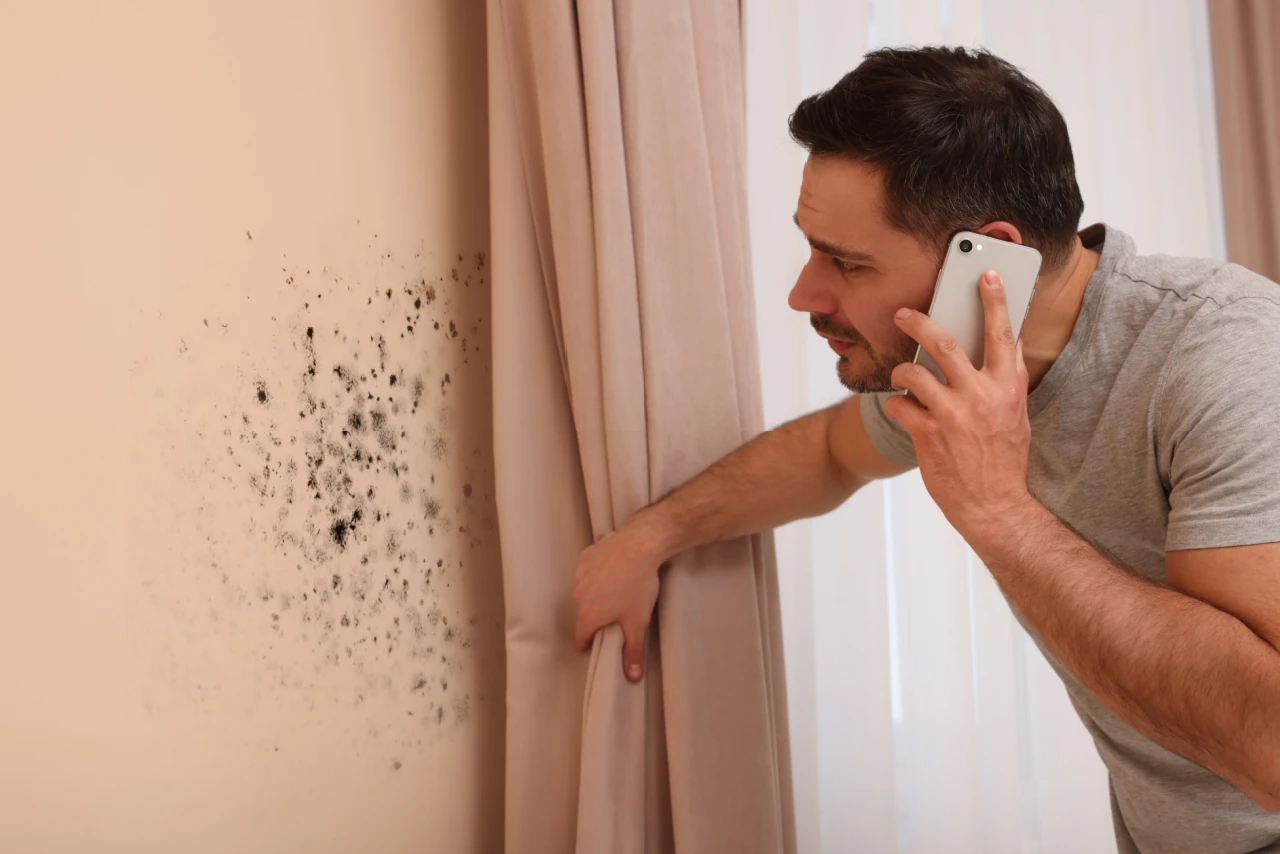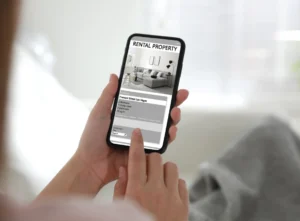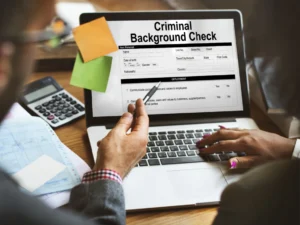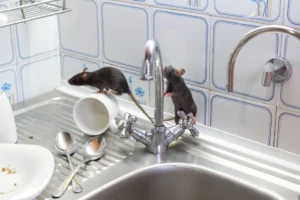Home·Property Management·How Common Is Mold In Rental Homes?
Why does mold seem to appear so often in rentals?

How Common Is Mold In Rental Homes?
Tenants dream of living in a place they can truly call home. However, issues like mold can sometimes get in the way. It makes the place feel stuffy and can even take a toll on your health. So, how common is mold in homes?
The truth is, not every house has mold, but it’s surprisingly common in certain areas. In this guide, we’ll break down what mold is, where it tends to hide, telltale signs you might have it, and what both tenants and landlords can do about it. Let’s dive in so you know exactly how to handle mold if it ever creeps into your space.
Main Takeaways
- Mold is a common issue in rentals often stemming from moisture, poor ventilation, and maintenance, and it presents various health risks.
- Recognizing mold is key, whether through a musty smell or visible discoloration, and immediate action is crucial to prevent worsening problems.
- Both landlords and tenants share responsibility for mold prevention and remediation, with clear duties for inspection, reporting, and professional removal to ensure a healthy living environment.
What Is Mold?
Fighting mold has been one of the core challenges we face as property management companies. It’s part of our responsibility to keep rental homes habitable, not just because the law says so, but also because it aligns with our core values.
According to the US EPA, molds are a natural part of the environment. They grow in spaces with moisture and oxygen and belong to the fungi kingdom. Indoors, they often appear as discoloration or stains. You’ll notice them as fuzzy, slimy, or powdery patches, and they come in colors such as black, green, white, brown, or sometimes other shades.
Many people also say mold has a distinct musty, earthy odor, making it easy to identify even before you spot it.
How Common is Mold in Rental Homes?
So, how common is mold in homes? In our experience in property management, mold is more common in rental homes than most people would admit. Some tenants even say they notice the smell first before they ever see it. But why does mold seem to appear so often in rentals?
- Poor ventilation – Moisture and oxygen are the main ingredients for mold to form. If air isn’t circulating properly, moisture builds up, and before long, mold follows.
- Poor maintenance – Sometimes, property owners don’t carry out regular maintenance. In turn, this allows mold to grow unnoticed over time.
- Structural problems – Issues like rising damp, penetrating damp, leaking pipes, loose roof tiles, blocked gutters, faulty extractor fans, and rotten doors or windows all create the perfect conditions for mold to thrive.
Paying Too Much For Insurance?
Get a FREE quote to insure your rental properties for less.
Where Does Mold Usually Grow in a Rental Home?
Mold only needs two things to grow—dampness and poor ventilation. Once those are present, it can show up almost anywhere in a home.
That said, there are some spots where it loves to hide more than others. Cold areas, such as window sills and bathroom grout, are common because they’re often damp and receive little airflow.
The bathroom and kitchen are also major trouble zones. In the kitchen, all that steam from cooking creates condensation. In bathrooms, poor ventilation traps moisture, providing mold with the perfect environment to grow.
Basements and attics also make the list. These areas are usually closed off and lack proper airflow, which means that any moisture tends to stay put.
Even soft surfaces, such as carpets and fabrics, aren’t safe. If they get wet and don’t dry properly, mold can easily creep in and spread.
Health Risks of Mold Exposure
The whole point of this discussion on how common is mold in homes is that mold isn’t just unsightly—it’s a real health hazard. Here’s what you need to watch out for:
- Allergic reactions – Mold spores can trigger allergies. In turn, you can pay the price. You could be left with sneezing, itchy eyes, and a runny nose.
- Respiratory problems – That musty smell isn’t harmless. It can make you cough, wheeze, and even cause nasal and sinus congestion. Worst of all, it can be dangerous–it can make you feel short of breath.
- Asthmatic attacks – For people with asthma, mold is known to be serious trigger. The air can easily set off an attack. In the wrong circumstances, this could become very dangerous, very quickly.
- Skin irritation – This part is a little less known: exposure to mold can also cause skin irritation. Then, that can result in redness, itching, or rashes.
Signs Of Mold in Your Rental
It’s actually pretty easy to tell when your house has mold. The first giveaway is a musty smell. If your home starts smelling damp or earthy, that’s usually mold’s way of announcing itself.
The second sign is visible mold growth. You’ll notice colored stains—maybe black, green, or brown—on walls, tiles, water pipes, and other damp areas. This is a clear sign that mold has settled in.
Then there’s outright structural damage, which occurs around the same time mold has been present for an extended period. You may notice wood starting to rot, pipes leaking, or even damage to your floors.
What To Do If You Find Mold in Your Rental
The question that often follows How common is mold in homes is this: What should you actually do if you spot it?
From our experience as property managers, small infestations can sometimes be handled with simple preventative steps:
- Turn on bathroom fans after bathing to reduce the amount of moisture in the air.
- Clean up spills on floors or carpets immediately before they have a chance to soak in.
- Switch on a kitchen fan or leave a window slightly open when cooking to keep moisture from building up.
- Avoid using humidifiers unless you really need them or a professional recommends it. If you do use one, clean them regularly and monitor the humidity levels to prevent even more mold growth.
If mold keeps showing up or spreads quickly, get your landlord involved right away. Make sure you report the problem as soon as possible. If you don’t, they could hold you responsible for not informing them and make you cover the costs. Also, make your report in writing. Doing so helps create a clear paper trail that you did your due diligence. This way, they can take action before the damage gets worse.
Landlord Responsibilities for Mold Removal
Landlords have a legal duty to ensure that rental homes are safe and habitable. That includes addressing mold problems properly. Here’s what they should do:
- Fix any mold before tenants move in – It’s the landlord’s responsibility to inspect for mold and address it before handing over the keys.
- Act quickly when mold is reported – Once a tenant reports mold, landlords are expected to respond fast and fix it. State laws can vary, but typically this timeframe is around 14 days.
- Call in the experts for removal – Mold isn’t something to just wipe off. Landlords should hire professionals to remove it entirely and prevent it from coming back.
- Make lasting fixes – After removal, landlords need to improve ventilation and sort out any moisture issues to keep the home mold-free.
Tenant Responsibilities for Preventing Mold
Tenants also play an important role in keeping the home mold-free. Here’s what you can do:
- Maintain the property – As a tenant, you’re expected to keep the place clean and dry. A little upkeep a day goes a long way. This simple routine goes a long way in preventing mold from taking hold.
- Work with your landlord on mold issues – If mold does appear, cooperate fully when repairs or preventive measures are being taken. After all, you want to make sure it is fully gone and banished from your home (and your lungs).
- Follow your lease agreement – Some leases include specific guidelines on how to care for the property and prevent mold. Be sure to stick to these rules—they’re there to protect you and the home. Furthermore, if you don’t follow them, the landlord may detract from your security deposit. So, there’s that, too.
Keeping Your Rental Homes Safe from Mold
Mold is a common issue in rental homes, often caused by poor ventilation, maintenance, or structural problems, and poses significant health risks to tenants. Both landlords and tenants have crucial roles in preventing and addressing mold, from identifying its signs to promptly taking action and cooperating on professional removal and lasting repairs.
Source: Bay Property Management Group
Get AAOA's Newsletter
Property Management News Categories
- Affordable Housing
- Collections
- COVID-19
- Eviction
- Fair Housing
- Financing
- Going Green
- Government
- Investing
- Landlord Forms
- Landlord Quick Tips
- Latest News
- Leasing
- Legal Brief
- Legal News
- Maintenance
- Make Extra Money
- Marketing Vacant Units
- Property Management
- Real Estate Investing
- Real Estate Trends
- Remodel and Repair
- Rent Magazine
- Security Deposit Alternatives
- Social Media
- Tax Tips
- Technology
- Tenant Screening
- Uncategorized













 Accessibility
Accessibility